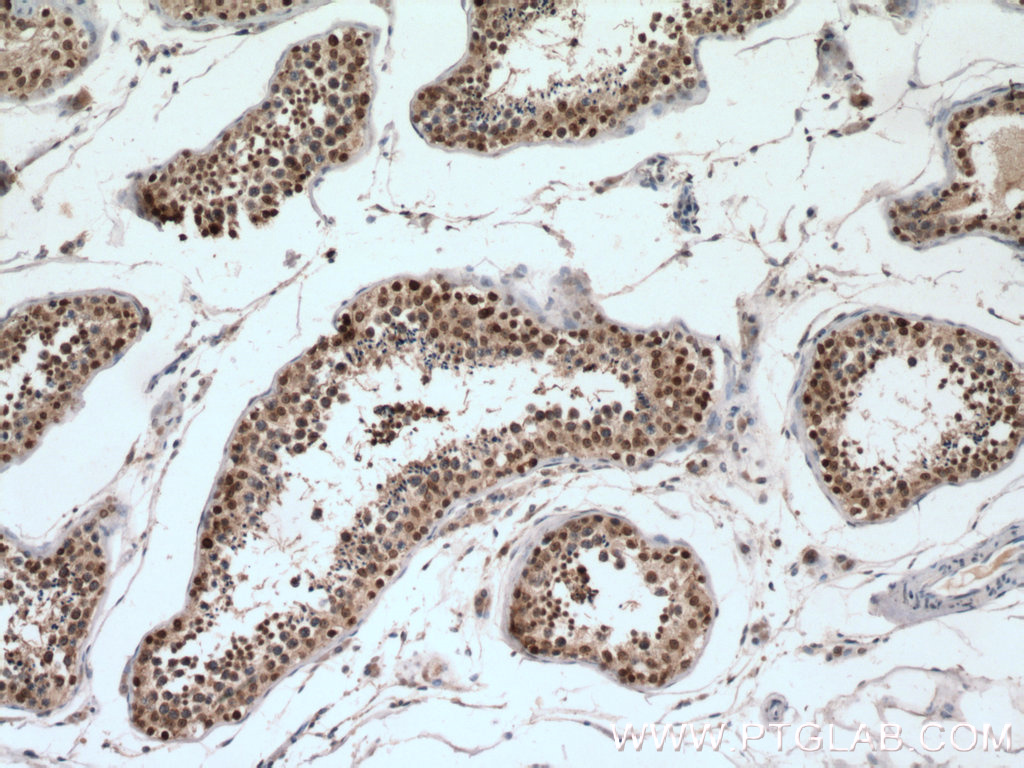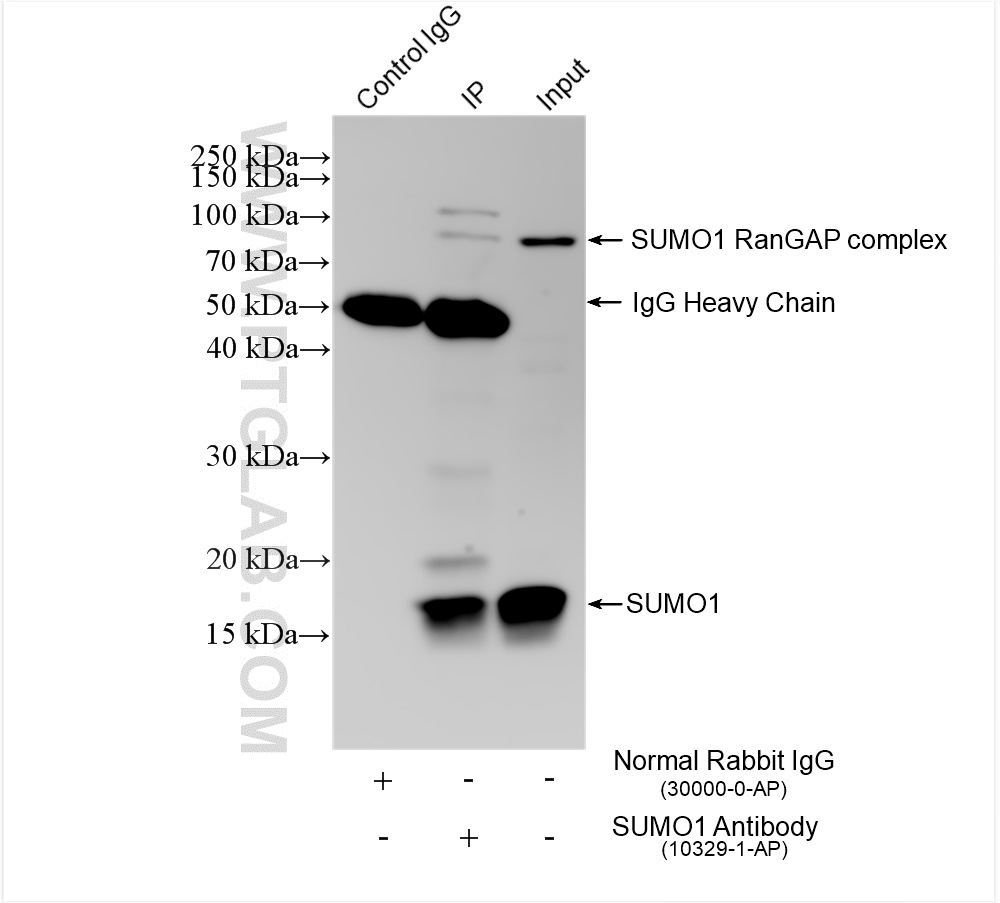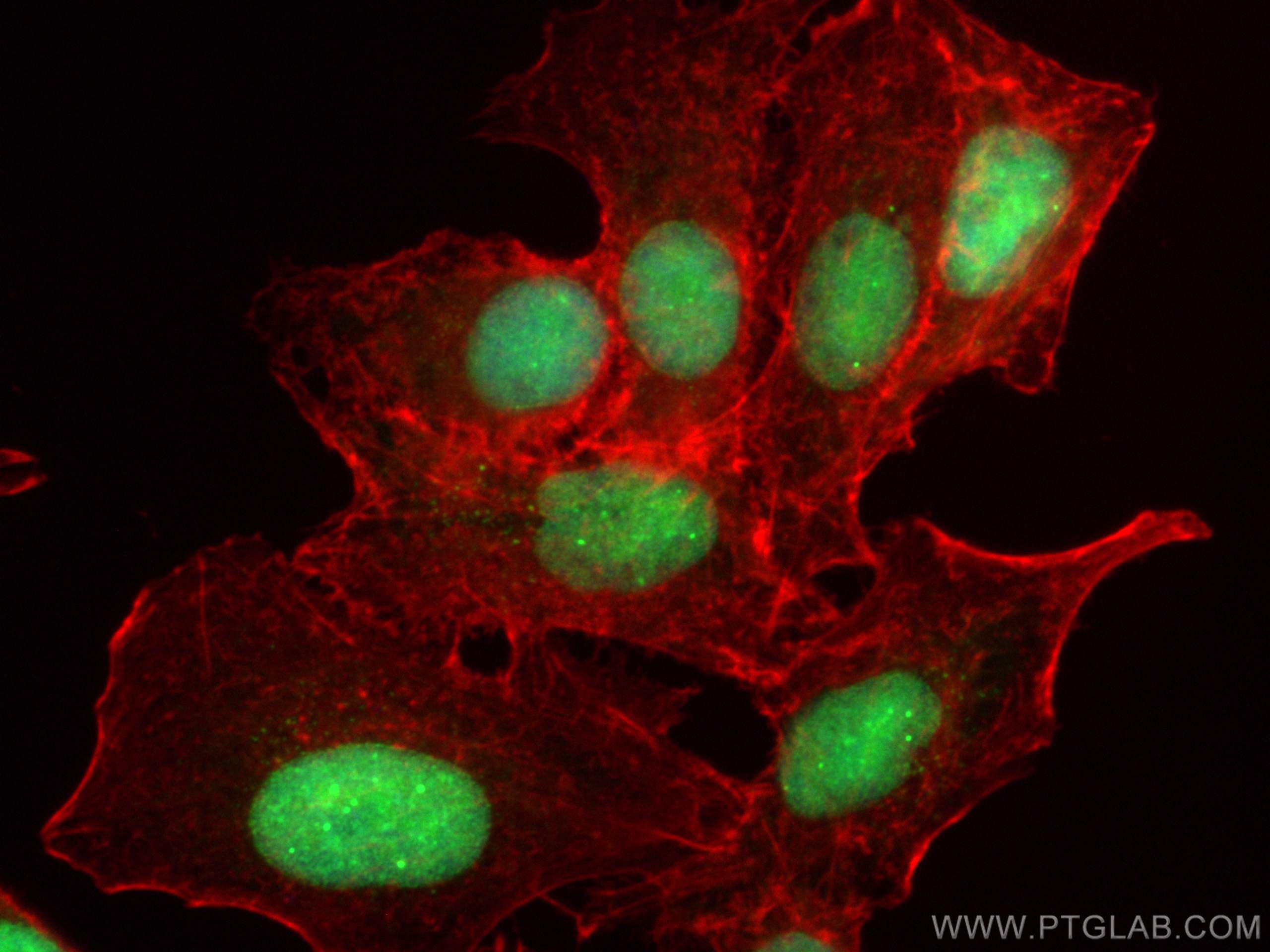验证数据展示
产品信息
10329-1-PBS targets SUMO1 in WB, IHC, IF/ICC, FC (Intra), IP, Indirect ELISA applications and shows reactivity with human, mouse, rat samples.
| 经测试应用 | WB, IHC, IF/ICC, FC (Intra), IP, Indirect ELISA Application Description |
| 经测试反应性 | human, mouse, rat |
| 免疫原 | SUMO1 fusion protein Ag0414 种属同源性预测 |
| 宿主/亚型 | Rabbit / IgG |
| 抗体类别 | Polyclonal |
| 产品类型 | Antibody |
| 全称 | SMT3 suppressor of mif two 3 homolog 1 (S. cerevisiae) |
| 别名 | Small ubiquitin-related modifier 1, Small ubiquitin related modifier 1, Sentrin, OK/SW-cl.43, GMP1 |
| 计算分子量 | 12 kDa |
| 观测分子量 | 12~18 kDa, 80-90 kDa |
| GenBank蛋白编号 | BC006462 |
| 基因名称 | SUMO1 |
| Gene ID (NCBI) | 7341 |
| RRID | AB_2286872 |
| 偶联类型 | Unconjugated |
| 形式 | Liquid |
| 纯化方式 | Antigen affinity purification |
| UNIPROT ID | P63165 |
| 储存缓冲液 | PBS only , pH 7.3 |
| 储存条件 | Store at -80°C. The product is shipped with ice packs. Upon receipt, store it immediately at -80°C |
背景介绍
Small ubiquitin-related modifier 1 (SUMO1) belongs to the ubiquitin family and the SUMO subfamily as it contains 1 ubiquitin-like domain and is also 18% identical to ubiquitin (PMID: 9654451).
1. What is the molecular weight of SUMO1?
The molecular weight of SUMO1 is 12 kDa.
2. What is the cellular localization of SUMO1?
SUMO1 is located in the nuclear membrane and is recruited by BCL11A to the nuclear body (PMID: 18681895).
3. What modifications is SUMO1 subjected to?
SUMO1 function occurs after the cleavage of its precursor form by SENP1 or SENP2 (PMID: 27576863). Polymeric SUMO1 chains also undergo polyubiquitination by RNF4 (PMID: 18408734).
4. What is the function of SUMO1?
SUMO1 post-translationally modifies many proteins that have roles in an array of processes including transcriptional regulation, chromatin structure, and DNA repair. SUMO1 can covalently attach itself to protein as a monomer or a lysine-linked polymer via an isopeptide bond (PMID:11124955). This SUMO modification can regulate the localization and activity of the affected proteins.
5. What is SUMO1's involvement in disease?
Defects in SUMO1 as a result of a chromosomal translocation are associated with non-syndromic orofacial cleft type 10, or non-syndromic cleft lip, and are associated with cleft palate in two-thirds of cases (PMID: 18983974).





